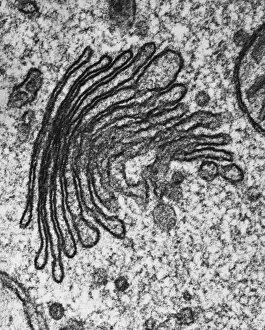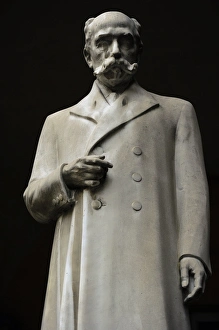Golgi Collection
The Golgi apparatus, named after the Italian physician and pathologist Camillo Golgi
All Professionally Made to Order for Quick Shipping
The Golgi apparatus, named after the Italian physician and pathologist Camillo Golgi, is a vital cell structure that plays a crucial role in cellular transport and packaging. In 1906, Golgi was awarded the Nobel Prize for his discovery of this intricate organelle. Camillo Golgi (1843-1926) dedicated his life to medical research and made significant contributions to the field of pathology. His work at the University of Pavia in Italy paved the way for groundbreaking discoveries in cellular biology. The Golgi apparatus, also known as the Golgi complex or simply "Golgi, " can be visualized as an interconnected network of flattened sacs called cisternae. These cisternae are stacked upon each other like pancakes, forming a unique structure within cells. Artwork depicting the Golgi apparatus showcases its complexity and beauty. The detailed illustrations highlight its distinct morphology and emphasize its importance in intracellular processes. From artwork F006/9211 to F006/9189, these representations provide insight into this remarkable cell structure. Furthermore, transmission electron microscopy (TEM) images such as C015/6764 and TEM C017/8234 offer a closer look at the ultrastructure of the Golgi apparatus. These high-resolution images reveal intricate details about its organization and function within cells.








